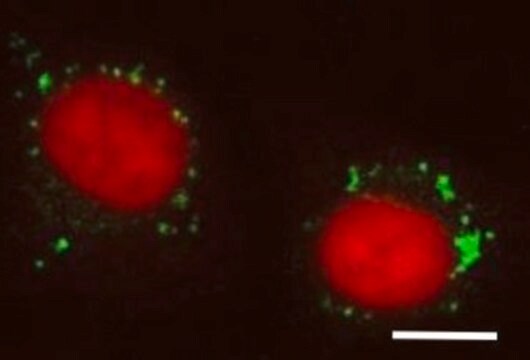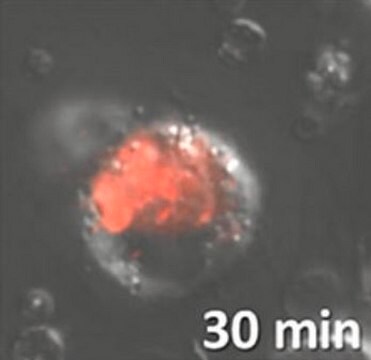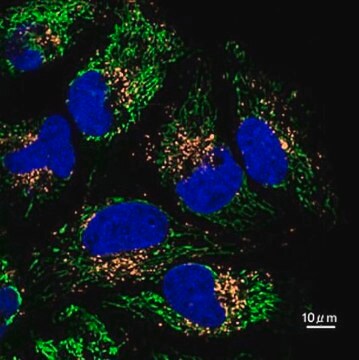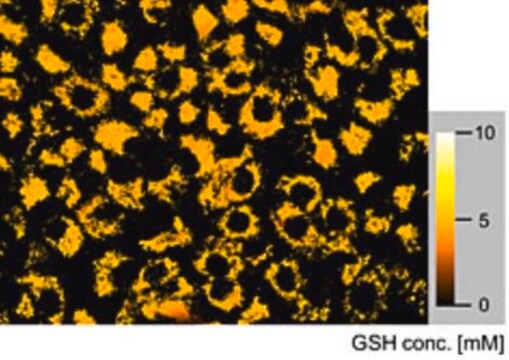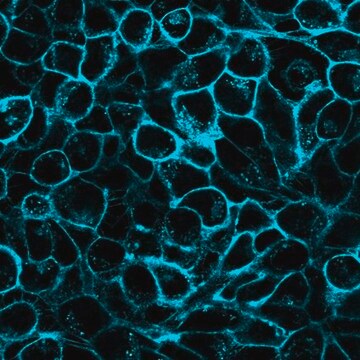SCT043
BioTracker TP-HOCL1 Live Cell Dye
Live cell imaging dye for hypochlorus acid (HOCL) used to detect phagocytosis, inflammation and cellular apoptosis.
Synonym(s):
Live cell imaging probe
About This Item
Recommended Products
Assay
≥98% (H-NMR)
≥98% (HPLC)
≥98% (LC/MS)
≥98% (elemental analysis)
technique(s)
cell based assay: suitable
detection method
fluorometric
shipped in
ambient
General description
The BioTracker TP-HOCL1 dye is a live cell two-photon green fluorescent “turn-on” imaging probe for HOCL. The probe exhibit fast response times, good selectivity, and high sensitivity towards hypochlorous acid in living cells. Acedan was chosen as the fluorescence reporting group due to its excellent photophysical properties resulting from the typical “push−pull” (amineketone) structure. 2- mercaptoethanol and 1, 2-ethanedithiol were employed to protect the ketone of acedan in the design of HOCl probes. Reaction of the probe with HOCl, which deprotects the oxathiolane/mercaptal group to reveal the ketone, would lead to fluorescence enhancement
Spectral Properties
Absorbance: 375nm
Emission: 500nm
References
Chang YT et al. Development of Targetable Two-Photon Fluorescent Probes to Image Hypochlorous Acid in Mitochondria and Lysosome in Live Cell and Inflamed Mouse. Model. J Am Chem Soc. 2015 May 13;137(18):5930-8.
Application
Cell Imaging
Live Cell Dye
Quality
Molar Mass: 258.36 g/mol
Physical form
Storage and Stability
Note: Centrifuge vial briefly to collect contents at bottom of vial before opening.
Disclaimer
Storage Class Code
11 - Combustible Solids
WGK
WGK 3
Flash Point(F)
Not applicable
Flash Point(C)
Not applicable
Regulatory Listings
Regulatory Listings are mainly provided for chemical products. Only limited information can be provided here for non-chemical products. No entry means none of the components are listed. It is the user’s obligation to ensure the safe and legal use of the product.
JAN Code
SCT043:
Certificates of Analysis (COA)
Search for Certificates of Analysis (COA) by entering the products Lot/Batch Number. Lot and Batch Numbers can be found on a product’s label following the words ‘Lot’ or ‘Batch’.
Already Own This Product?
Find documentation for the products that you have recently purchased in the Document Library.
Our team of scientists has experience in all areas of research including Life Science, Material Science, Chemical Synthesis, Chromatography, Analytical and many others.
Contact Technical Service